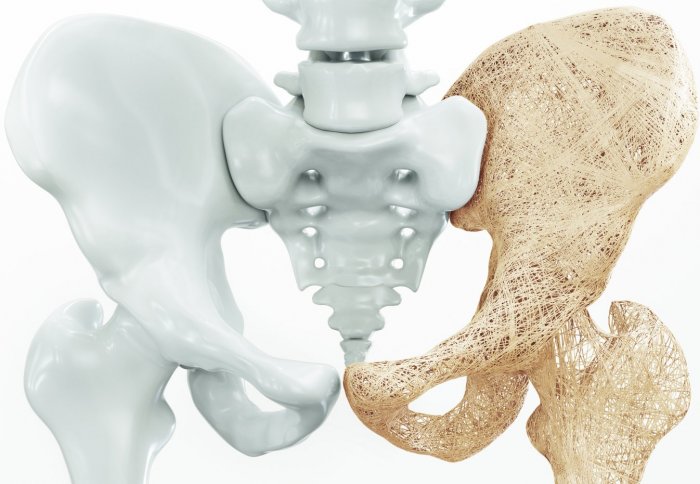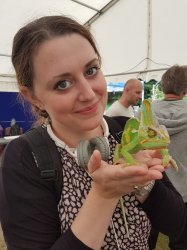

Researchers have identified 153 new genetic variants linked to bone mineral density, and have highlighted GPC6 as a new gene involved in osteoporosis.
Osteoporosis is defined by deterioration in bone structure, and commonly results in fractures. It affects 50 per cent of women and 20 per cent of men over the age of 50, representing more than three million people in the UK. Osteoporosis costs the NHS more than £2.3 billion per year, and half a million people require hospital treatment for fractures due to the disease.
This major international study illustrates the power and therapeutic potential of combining UK Biobank with large scale human genetics and functional analysis of knockout mice
– Professor Graham Williams
Department of Medicine
Now, an international team of researchers from Imperial College London, the University of Queensland in Australia, and McGill University in Canada, have identified 153 new genetic variants linked to osteoporosis, which account for 12 per cent of the heritability of the disease.
The findings triple the number of genes already associated with osteoporosis, and double the amount of inherited risk that can be explained.
The results, published this week in Nature Genetics, could be used to define osteoporosis risk and identify new targets for future drug development.
UK Biobank
The researchers analysed data from 140,000 individuals in the UK Biobank, a large repository of clinical data and biological samples from 500,000 participants across the UK.
Genetic variants across the whole genome were compared with bone mineral density determined by heel ultrasound, and these studies identified 153 new regions. Fractures within the population were particularly associated with 12 of the new gene regions and strongly implicated the gene GPC6, which had not previously been linked to osteoporosis.
International Mouse Phenotyping Consortium
In a key part of the study, co-authors Professor Graham Williams and Professor Duncan Bassett from Imperial’s Department of Medicine also identified abnormal bone mass and strength in genetically modified mice, in which the GPC6 gene was deleted. This work was performed as part of their Wellcome Trust funded Origins of Bone and Cartilage Disease (OBCD) Strategic Award in collaboration with the Wellcome Trust's Sanger Institute and International Mouse Phenotyping Consortium (IMPC).
Professor Williams said "This major international study illustrates the power and therapeutic potential of combining UK Biobank with large scale human genetics and functional analysis of knockout mice." Professor Bassett said "Our work demonstrates the critical importance of global collaboration and provides exciting new discoveries that will ultimately lead to new treatments for osteoporosis ".
Lead author Professor David Evans from the University of Queensland’s Diamantina Institute (UQDI) said: “What makes this gene particularly interesting is that it encodes a protein that is present on the surface of cells, making it a potential candidate for a drug target”
"Identification of 153 new loci associated with heel bone mineral density and functional involvement of GPC6 in osteoporosis" by Evans et al, published 4 September 2017 in Nature Genetics.
Supporters

Article text (excluding photos or graphics) available under an Attribution-NonCommercial-ShareAlike Creative Commons license.
Photos and graphics subject to third party copyright used with permission or © Imperial College London.
Reporter

Caroline Brogan
Communications Division

Contact details
Tel: +44 (0)20 7594 3415
Email: caroline.brogan@imperial.ac.uk
Show all stories by this author
Leave a comment
Your comment may be published, displaying your name as you provide it, unless you request otherwise. Your contact details will never be published.




Comments
Comments are loading...